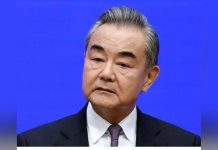Africa-Press – Lesotho. The government pension fund has a shortfall of M7,1 billion, about 37 percent of the national budget and plugging the gap will come at a huge cost to already over-burdened taxpayers. But a finance expert counselled members not to panic yet as the fund’s parlous state was not a precursor to certain collapse.
This emerged from the latest Public Officers’ Defined Contribution Pension Fund (PODCPF) actuarial evaluation, according to the International Monetary Fund (IMF) report published this week.
The valuation determines the pension fund’s capacity to fulfil its obligations towards members, as well as to retired public servants, in the medium and long-term.
Government’s ongoing frantic efforts to plug the gap are insufficient to fully cover the deficit in the foreseeable future, Public Eye has learnt. “The PODCPF has a funding shortfall, that remains to be ascertained.
The mission (IMF mission that was in the country recently) understood that an actuarial assessment of the PODCPF had indicated a funding shortfall of 7.1 billion Maloti,” read the IMF report. However, the report indicated that the pension fund “is expected to commission another assessment”, from a different actuary to confirm the amount.
The contents of the report, prepared by Clement Ncuti and Laurent Kemoe, constitute technical advice provided by the staff of the IMF to the authorities of the Lesotho government in response to the latter’s request for technical assistance.
The IMF mission visited Maseru in mid-January, this year. It found that payments currently made to the pension fund as part of regular administrative expense support amounting to 6.2 percent of pensionable income included an estimated three percent meant for covering the fund’s shortfall.
“The mission understood that the amount is insufficient to fully cover the shortfall in a foreseeable future.
The Ministry of Finance may need to co-ordinate with the PODCPF to ascertain the exact amount of the shortfall, and devise plans to close the funding gap,” it said.
A former government official who was instrumental in establishment of the pension fund told Public Eye that while a pension deficit was not a positive situation, it did not necessarily mean that the fund is going burst.
The source indicated that government will create a plan to close the deficit – although this might be over a significant period, and that would wreak havoc on the nation’s finances and may force the government to increase borrowing and raise the budget deficit.
“Covering that shortfall is definitely going to come at a huge cost to the taxpayer because our tax revenue is significantly lower to cover the deficit.
This means government might need to borrow more or redirect funds which could be used to build roads and hospitals,” the source said. The Pension Fund is a standalone, independent defined contribution fund with minimal financial risk to the government.
It was established under the Public Officers’ Defined Contribution Pension Fund Act of 2008, to create and provide benefits for all pensionable officers in government service. It came about as a result of government’s decision to change from the defined benefit to a defined contribution.
The employer and a member of the pension fund each makes a monthly contribution that is paid into the fund’s bank account “on the first working day of the calendar month in respect of which the contributions are payable”.
On retirement, a fund member is entitled to a portion of their fund credit to the maximum of 25 percent as a cash benefit. The remaining percentage is used to purchase an annuity for the member from a registered insurer of their choice.
Annuity is a series of monthly pension payments until a pensioner dies. When contacted on Wednesday, the pension fund’s communication officer Matshona Libalele Mlungwana referred Public Eye to the fund’s annual report for the financial year 2017/2018 – the latest available.
The annual report showed that the actuarial valuation of the fund as at 31 March 2017, placed the underfunded status of the fund at M7.1 billion corresponding to 41 percent funding level.
This position was compared to the similar period in the previous financial year 2017/2018, which placed the underfunding at M5.7 billion corresponding to a funding level of 44.1 percent.
The 2017/2018 financial statements were approved by the fund’s board of trustees on February 7, this year. In her statement, the chairperson of the fund’s board of trustees, Motena Tšolo, acknowledged that the funding position of the pension fund was not pleasing.
“Admittedly, the funding position of the Fund has not been pleasing and the main reasons are attributed to inaccurate membership data and the promise by the employer to pay members’ benefits that are not less than the benefits they would be entitled to had they not become members of the fund,” Tšolo said.
She said the promise was enshrined in the 1993 constitution of Lesotho and enjoined the fund and the government to live up to the expectations of the members.
“This position being a legacy issue, affects only Public Officers who were already employed by the government at the commencement of the Act,” she added.
That said, she further noted, this position should not bring panic to the membership of the fund as the government is expected to address the shortfall.
“This is not an unusual phenomenon in the pension fund industry mainly because the Fund is a going concern and the cited M7.1 billion underfund becomes relevant only in an instance that the unthinkable would happen and the fund would be obliged to pay all its membership their benefits in full at once,” she said.
The 2017/2018 annual report further showed that: Analysis of previous actuarial valuations shows that the pension fund’s position is on a downward spiral if the trend continues unchecked.
In accordance with the rules of the pension fund, the actuarial position of the fund is examined and reported on by the actuary at intervals not exceeding three years.
An interim evaluation was performed as at March 31, 2010, and the evaluator reported that the fund was in sound financial position, “and that the present rates of contribution are adequate to enable the fund to provide benefits to which members are entitled”.
A year later, in 2011, the fund was found with a shortfall of M2.04 billion, with funding levels of 45 percent. The valuator reported that the fund was not in a sound financial position, “and that the present rates of contributions are inadequate to enable the fund to provide the benefits to which Members are entitled”. By 2014 that deficit had widened to M5.56 billion, with a funding level of 36.60 percent, before it climbed to 5.711 in 2016.
For More News And Analysis About Lesotho Follow Africa-Press






